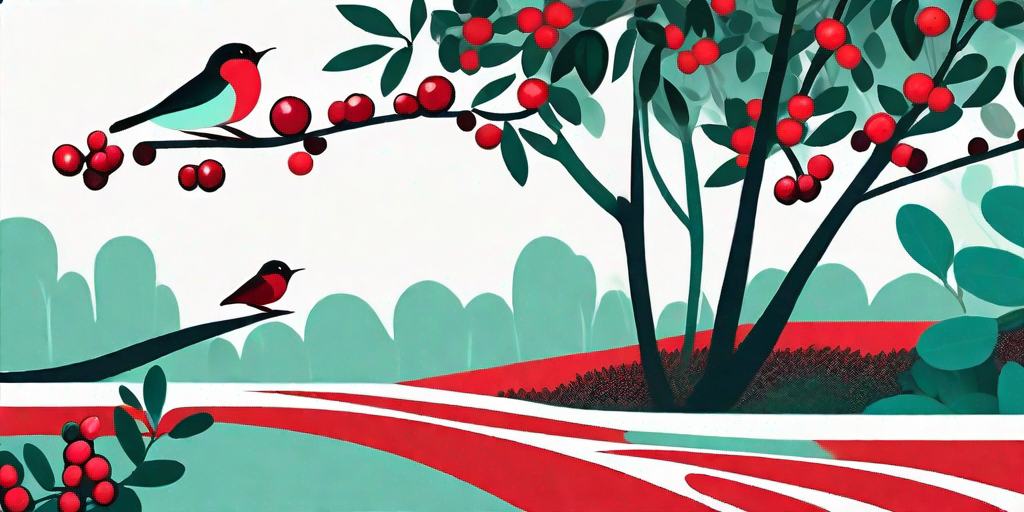
If you're looking for a secret weapon to make your garden the envy of the neighborhood, look no further than the Cotoneaster. This versatile, hardy, and downright gorgeous plant is the unsung hero of many a beautiful garden. But don't just take our word for it. Let's dive into the world of Cotoneaster and see what makes it so special.
What is Cotoneaster?
Before we start singing praises, let's first understand what Cotoneaster is. It's a genus of flowering plants in the rose family, Rosaceae. They are native to the Palaearctic region (which includes all of Europe, Asia north of the Himalayas, and Africa north of the Sahara) but have since spread to other parts of the world.
There are over 200 species of Cotoneaster, but don't let that number intimidate you. Each species has its unique charm, but they all share some common traits: they're hardy, they're versatile, and they're beautiful. Whether you're a seasoned gardener or a green thumb in training, there's a Cotoneaster for you.
The Many Faces of Cotoneaster
With over 200 species, Cotoneaster is a bit like a box of chocolates - you never know what you're going to get. But unlike a box of chocolates, there's no such thing as a bad Cotoneaster. Let's take a look at some of the most popular species.
Cotoneaster horizontalis
Also known as the rockspray cotoneaster, this species is a favorite among gardeners for its distinctive herringbone pattern. Its branches spread out horizontally (hence the name), creating a beautiful, intricate pattern that's sure to catch the eye. And when it's covered in bright red berries in the fall, it's truly a sight to behold.
Cotoneaster dammeri
The bearberry cotoneaster is a ground-covering species that's perfect for those tricky areas of your garden where nothing else seems to grow. It's a hardy little plant that can withstand harsh conditions, and its glossy green leaves and bright red berries add a splash of color to any garden.
Cotoneaster lacteus
The parney cotoneaster is a large, evergreen species that's perfect for creating hedges. Its dark green leaves provide a beautiful backdrop for its clusters of white flowers and red berries. And the best part? It's virtually maintenance-free.
How to Grow Cotoneaster
Now that we've piqued your interest, let's get down to the nitty-gritty: how to grow Cotoneaster. Don't worry, it's not as complicated as it sounds. In fact, Cotoneaster is one of the easiest plants to grow.
Choosing the Right Spot
Cotoneaster isn't picky about where it grows. It can thrive in full sun or partial shade, and it can tolerate a wide range of soil types. However, it does prefer well-drained soil, so if your garden tends to be a bit soggy, you might want to consider improving the drainage.
Planting Your Cotoneaster
Once you've chosen the perfect spot, it's time to plant your Cotoneaster. Dig a hole that's twice as wide and just as deep as the root ball. Place the plant in the hole, making sure the top of the root ball is level with the ground. Fill in the hole, firm the soil around the plant, and water thoroughly.
Caring for Your Cotoneaster
Cotoneaster is a low-maintenance plant, but it does appreciate a bit of TLC. Water it regularly, especially during dry spells. Prune it in late winter or early spring to maintain its shape and remove any dead or diseased branches. And if you want to encourage more flowers and berries, consider applying a balanced fertilizer in the spring.
FAQs
Is Cotoneaster evergreen?
Some species of Cotoneaster are evergreen, while others are deciduous. The evergreen species, like the parney cotoneaster, keep their leaves all year round, while the deciduous species lose their leaves in the fall.
Is Cotoneaster poisonous?
Cotoneaster berries are mildly poisonous if ingested. They're not a danger to birds, who seem to love them, but they can cause stomach upset in humans and pets. So if you have curious children or pets, you might want to keep an eye on them around the Cotoneaster.
Does Cotoneaster attract wildlife?
Yes, Cotoneaster is a wildlife-friendly plant. Its flowers attract bees and other pollinators, and its berries are a favorite food source for birds in the winter.
Conclusion
So there you have it - the secret weapon for a beautiful garden. Cotoneaster is versatile, hardy, and beautiful, making it a great choice for any garden. Whether you're a seasoned gardener or a green thumb in training, give Cotoneaster a try. Your garden (and your neighbors) will thank you.















